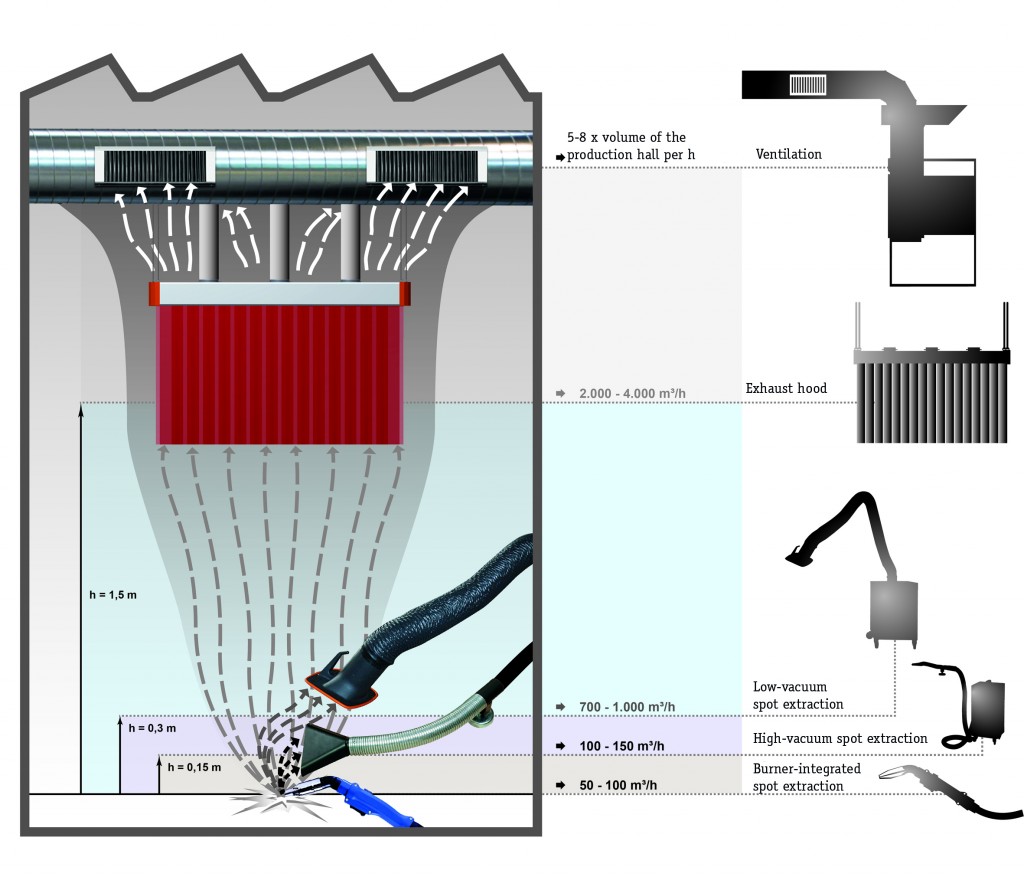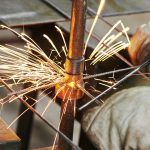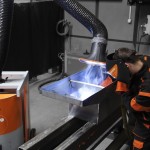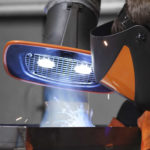Extracting welding fumes with right distance from emissions source
There are many more ways to collect welding fumes than often thought. Each has pros and cons, and optimum safety can be achieved – under certain working conditions – only by combining several measures.
- Burner-integrated spot extraction
In this method, the welding fumes are immediately collected at the point of origin. The extraction nozzle is integrated into or suspended on the burner. The airstream is minimal, because the distance from the emissions source is small. Still, a very high pressure of 10,000 PA or greater must pass through the narrow crosscut in the suction hose. Some welding positions will be restricted due to design constraints.
- High-vacuum spot extraction
Spot extraction with a suction nozzle at a distance of up to 150 mm is possible with the high-vacuum option. Air passes through at a pressure of at least 6,000 PA, whereby most magnets can hold the nozzle in position. The short range means that only fumes in a limited area are collected. As a result, the suction nozzle must be repositioned often.
- Low-vacuum spot extraction
Probably the most common version of spot extraction is the low-vacuum option. Devices with a suction arm, at the end of which an exhaust hood collects welding fumes, can be positioned freely and hold their position self-supported. With free-moving suction arms at lengths of 1.5 to 10 meters, larger workpieces can be worked on with no problem.
It’s also well within possibility to collect fumes with an exhaust hood 300 to 400 mm from the emissions source. The air volume varies depending on the size of the hood and reaches from about 700 to 1,000 cubic meters per hour, at a pressure of 800 to 1,200 PA.
- Exhaust hood
The exhaust hood as a stationary installed device is sensible for robotic welding. The hood is positioned over the welding zone. The welding fumes rise and are collected. Side slat curtains keep air current from carrying the fumes into the room and increase the fume collection. The low air pressure of 100 PA for typical volumes between 2,000 and 4,000 cubic meters per hour, depending on layout, should be sufficient to collect the entire thermal stream. Such exhaust hoods are not suitable for manual welding work, however. The pollution in the breathing area is hardly reduced.
- Ventilation
Room or building ventilation serves mainly to support the other methods. Under some conditions, however, e.g. for very large workpieces with constantly changing welding sites, it is also the only option available. A distinction is made in room ventilation between circulated and layered ventilation. Extraction takes place mostly at a height between four and six meters.
Layered ventilation extracts the rising polluted air and blows filtered air back out near the floor at as low a force as possible. The supported rise of air creates noticeably better air quality in the room.
With circulated ventilation, supply air enters the room via air jet nozzles or vents on the ceiling. The room air is mixed, whereby it must be ensured that no polluted air gets into any neighboring shop areas.
From an energy perspective, room ventilation makes sense because a multiple of the volume of room air is exchanged every hour. This saves an enormous amount of energy costs for air conditioning the room.






